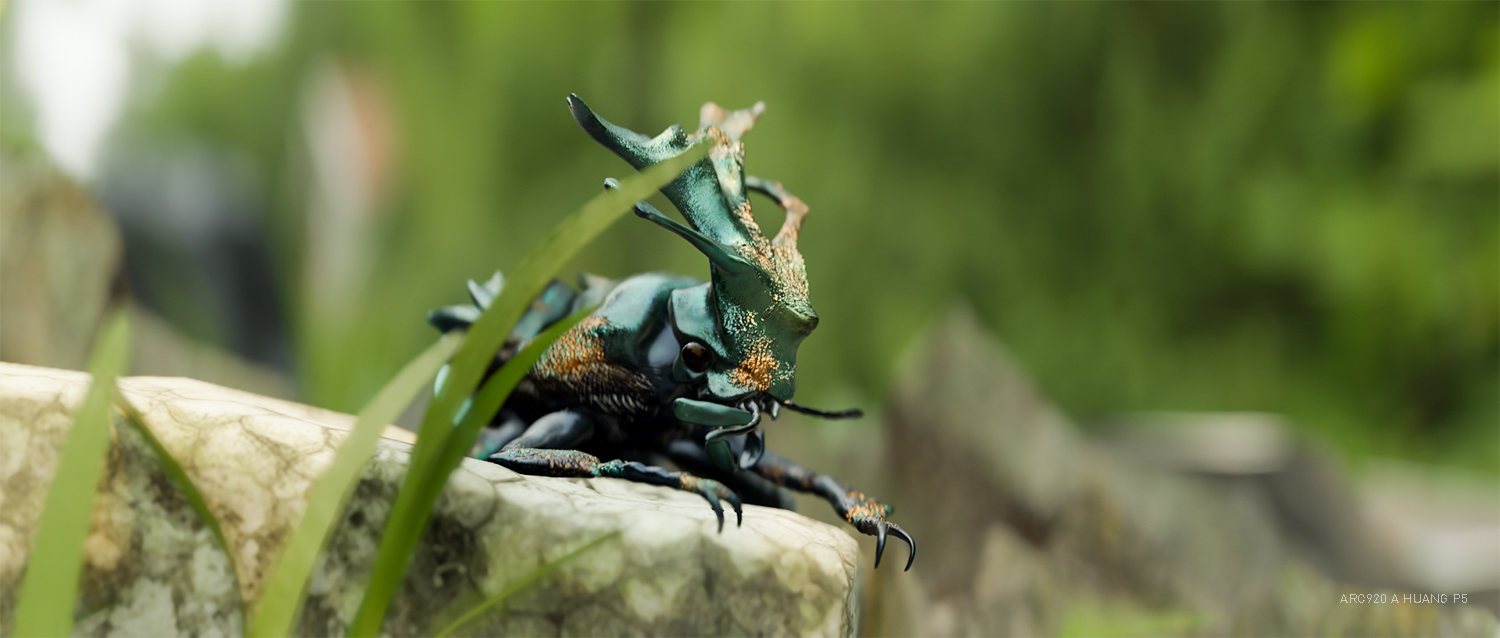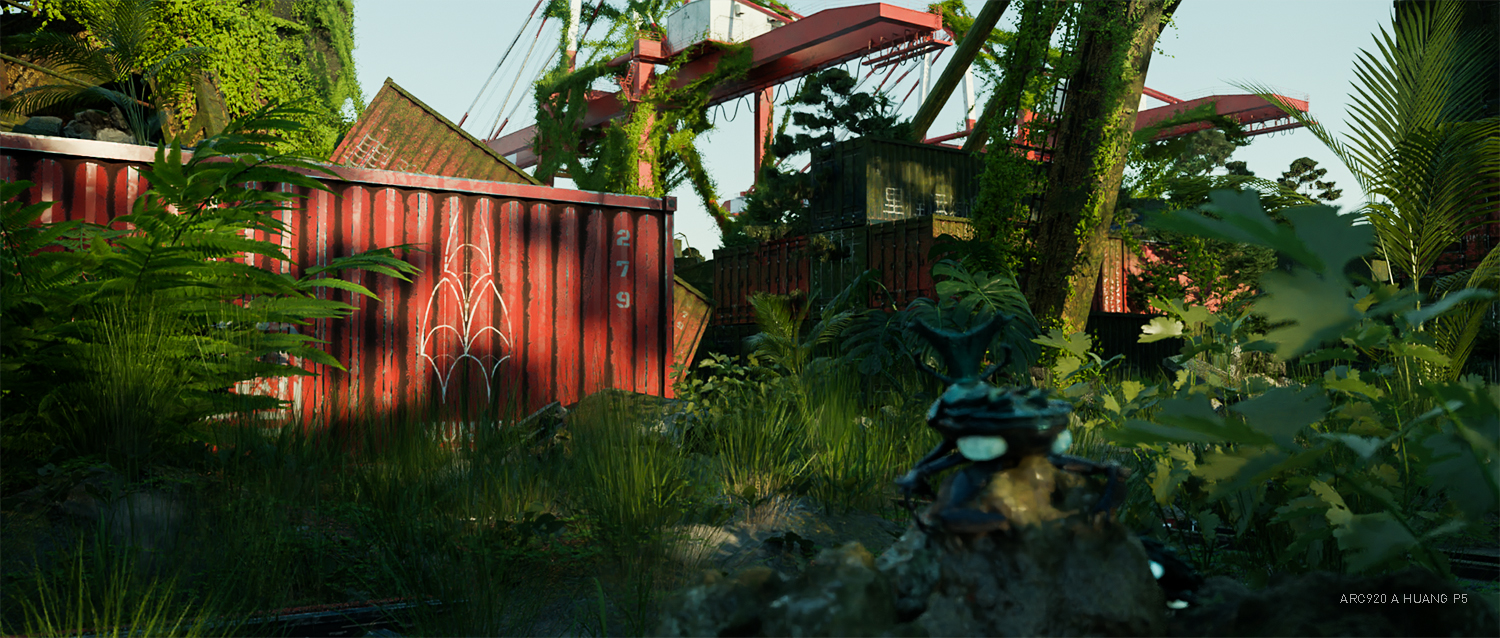Alvin Huang
Ecologies Design Studio P5 - Let Me Explain:
Ecologies Design Studio P5 - Let Me Explain:
Busan Beetle
Over the course of the term students have been tasked with designing a creature and its entire life cycle in response to the Post-Anthropocene. This intimate awareness allows students to create a compelling narrative that presents their creature(s) in a specific manner. Some may envision their creature as a silent predator, lurking as a constant threat to the creatures in the ecosystem whereas others may see their creatures as voracious creatures oblivious to anything beyond themselves and their offspring. Within this spectrum, all creatures will live and die, however the narratives are at each student’s disposal. The life of all creatures encapsulates danger, loss, fortune, interaction, and even humor – it is merely a matter of framing the narrative from a certain point of view. This project is a summative work that synthesizes students’ concepts and content developed over the term in the production of a thorough digital presentation accompanied by a trailer for the creature in the Post-Anthropocene. As outlined by Dixon, this is quite a disciplinary feat but not impossible given the quicker reaction and retention by contemporary viewership.
The diversity of perspectives one may take on their creature and its lifecycle is as varied as the genres and cinematic directions available in popular culture. From the pedantic nature documentary and biography to the rom-com or slasher flick, trailers quickly a) grab an audience’s attention, b) convey the major narrative premise, c) establish a mood, and d) instill audience interest to further invest in the story. Students are expected to create a brief trailer that prefaces the presentation while balancing the need to address these aforementioned points with the provision of the premise of the narrative. As with conventional movie trailers, student projects may use content that is both within the presentation (both new and old material) as well as content that may not otherwise be in the actual presentation component of the assignment.
Fundamentally, the trailer provides a stylized outline of the creature’s life that arouses interest in the audience to demand further explanation in the presentation.
The diversity of perspectives one may take on their creature and its lifecycle is as varied as the genres and cinematic directions available in popular culture. From the pedantic nature documentary and biography to the rom-com or slasher flick, trailers quickly a) grab an audience’s attention, b) convey the major narrative premise, c) establish a mood, and d) instill audience interest to further invest in the story. Students are expected to create a brief trailer that prefaces the presentation while balancing the need to address these aforementioned points with the provision of the premise of the narrative. As with conventional movie trailers, student projects may use content that is both within the presentation (both new and old material) as well as content that may not otherwise be in the actual presentation component of the assignment.
Fundamentally, the trailer provides a stylized outline of the creature’s life that arouses interest in the audience to demand further explanation in the presentation.







